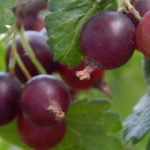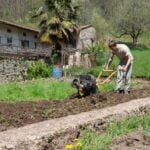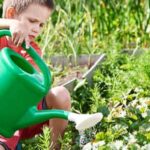Are you interested in growing your own vegetables, but want to do it in an eco-friendly and sustainable way? Low water vegetable gardening might be the solution for you. In this article, we will explore the various aspects of low water vegetable gardening, including its benefits, choosing the right vegetables, implementing water-saving techniques, proper irrigation, soil preparation, pest and disease management, success stories, and additional resources for further learning.
Low water vegetable gardening is becoming increasingly popular as people seek to conserve water and reduce their environmental impact. By using water-efficient methods and selecting drought-resistant plants, gardeners can enjoy bountiful harvests while minimizing their water usage. In this section, we will delve into the world of low water vegetable gardening and uncover the many benefits it offers.
Choosing the right vegetables is crucial for successful low water gardening. Not all plants are created equal when it comes to drought tolerance. By selecting vegetables that are well-suited for low water conditions, gardeners can ensure that they have a thriving garden without excessive watering. We will discuss which vegetables are best suited for low water gardening and how to care for them effectively. Stay tuned as we uncover the secrets to successful low water vegetable gardening.
The Benefits of Low Water Vegetable Gardening
Low water vegetable gardening comes with a range of benefits. By using less water to grow your vegetables, you are not only saving on resources but also contributing to environmental conservation. Low water vegetable gardening has gained popularity in regions with water scarcity, where traditional gardening practices may not be sustainable.
One of the primary benefits of low water vegetable gardening is its positive impact on the environment. Conserving water helps reduce the strain on local water sources, making this method more sustainable in the long run. Additionally, by implementing drought-resistant techniques, you can help prevent soil erosion and maintain soil health, supporting the overall ecosystem.
Another advantage of low water vegetable gardening is its cost-effectiveness. By reducing your reliance on excessive irrigation and watering systems, you can potentially save money on utility bills and maintenance costs for your garden. Furthermore, as low water gardening often utilizes natural and organic methods, you may also save on expensive fertilizers and pesticides.
Furthermore, embracing low water vegetable gardening can lead to a greater sense of self-sufficiency and satisfaction as a gardener. Cultivating vegetables with minimal water resources encourages creativity and problem-solving skills, as gardeners find innovative ways to nurture their plants while minimizing water usage.
| Benefit | Description |
|---|---|
| Environmental Impact | Reduces strain on local water sources and supports the overall ecosystem. |
| Cost-Effectiveness | Potential savings on utility bills and maintenance costs for gardens. |
| Sense of Self-Sufficiency | Encourages creativity and problem-solving skills in gardeners while promoting sustainability. |
Choosing the Right Vegetables for Low Water Gardening
When it comes to low water vegetable gardening, choosing the right vegetables is crucial for success. Not all vegetables are created equal in terms of their water needs, so it’s important to select varieties that are well-suited to drier conditions. Here are some options for vegetables that thrive in low water environments:
- Root Vegetables: Root vegetables like carrots, beets, and radishes have deep root systems that allow them to access moisture from deeper in the soil, making them a great choice for low water gardening.
- Leafy Greens: Leafy greens such as spinach, kale, and Swiss chard are known for being more drought-tolerant than other types of vegetables, making them a smart choice for low water gardening.
- Succulent Vegetables: Vegetables with thick leaves or fruits, like tomatoes and peppers, are able to store water more effectively, making them suitable for low water gardening.
In addition to selecting the right vegetables, it’s also important to consider the specific growing conditions in your region when choosing what to plant in your low water garden. Some vegetables may be better suited to your particular climate and soil type than others.
By carefully selecting the right vegetables for your low water garden, you can set yourself up for a successful and bountiful harvest while minimizing the need for excessive watering. Ultimately, choosing the right vegetables is a key step in creating a thriving low water vegetable garden that is both sustainable and productive.
Implementing Water-Saving Techniques in Vegetable Gardening
Use Drip Irrigation Systems
One of the most effective water-saving techniques in low water vegetable gardening is the use of drip irrigation systems. These systems deliver water directly to the roots of the plants, reducing evaporation and ensuring that the water is used efficiently. By incorporating a timer into the drip irrigation system, you can also control when and how much water is applied to your vegetable garden, further maximizing its effectiveness.
Mulching
Another important technique for saving water in vegetable gardening is mulching. Applying a layer of mulch around your vegetables helps retain soil moisture by reducing evaporation and suppressing weed growth. Organic options like straw, wood chips, or compost can also improve soil structure and fertility while conserving water.
Companion Planting
Companion planting involves growing certain plants together to maximize space, deter pests, and enhance growth. In the context of low water vegetable gardening, companion planting with drought-resistant plants or those with similar watering needs can help conserve water by creating a more balanced and sustainable ecosystem within your garden. For example, planting aromatic herbs such as sage or thyme near your vegetables can help repel pests and reduce the overall water requirements for your garden.
Implementing these water-saving techniques in your low water vegetable gardening will not only conserve valuable resources but also promote healthier and more resilient crops. With careful planning and proper implementation, you can enjoy a thriving vegetable garden while minimizing your environmental impact through sustainable gardening practices.
Tips for Proper Irrigation in Low Water Vegetable Gardening
Proper irrigation is a key component of successful low water vegetable gardening. By using water efficiently, gardeners can ensure that their vegetables receive the moisture they need while minimizing waste. One important tip for proper irrigation in low water vegetable gardening is to use drip irrigation systems.
These systems deliver small amounts of water directly to the base of plants, reducing evaporation and ensuring that water reaches the roots where it is needed most. Drip irrigation also helps to prevent water from coming into contact with leaves, which can reduce the likelihood of disease.
Another tip for proper irrigation in low water vegetable gardening is to mulch the soil around plants. Mulch helps to retain moisture in the soil, reducing the frequency of watering needed. Organic mulches such as straw or wood chips can also improve soil structure and fertility over time.
Additionally, gardeners practicing low water vegetable gardening should carefully monitor soil moisture levels before watering. One simple way to do this is by using a moisture meter, which can help determine whether plants truly need water or if they are receiving enough from natural sources such as rainfall.
Lastly, it’s important for gardeners practicing low water vegetable gardening to take advantage of rainwater harvesting. Capturing and storing rainwater can provide a free source of irrigation for vegetables during dry periods, reducing reliance on traditional water sources. By implementing these tips for proper irrigation, gardeners can ensure that their low water vegetable gardens thrive while conserving precious resources.
Overall, proper irrigation is essential for successful low water vegetable gardening and by using techniques such as drip irrigation, mulching, and rainwater harvesting gardeners can ensure their vegetables receive adequate moisture while minimizing waste and promoting sustainability.
Best Practices for Soil Preparation in Low Water Vegetable Gardening
Soil preparation is a crucial step in low water vegetable gardening. By using the right techniques and tools, gardeners can ensure that their plants have the best possible chance of thriving in a low water environment. Here are some best practices for soil preparation in low water vegetable gardening:
1. Test and Amend the Soil: Before planting your vegetables, it’s important to test the soil to determine its pH levels and nutrient content. This will help you understand what amendments the soil needs to support healthy plant growth in a low water environment. Adding compost, organic matter, and slow-release fertilizers can help improve the soil structure and fertility.
2. Use Mulch: Mulching is an effective way to retain moisture in the soil, which is essential for low water vegetable gardening. Organic mulches such as straw, wood chips, or shredded leaves can be applied around vegetable plants to help keep moisture levels consistent and reduce the need for frequent watering.
3. Raised Bed Gardening: Consider using raised beds for your low water vegetable garden. Raised beds allow for better control over soil composition and drainage, which is especially beneficial in regions with limited water resources. They also warm up faster in spring, allowing for earlier planting and extended growing seasons.
By implementing these best practices for soil preparation, gardeners can create an optimal growing environment for their vegetables while conserving water. Keeping the soil healthy and well-nourished is key to successful low water vegetable gardening.
Dealing With Pest and Disease Management in Low Water Vegetable Gardening
Dealing with pests and diseases is a common challenge for all gardeners, but it becomes even more crucial in low water vegetable gardening. The stress that comes with limited water availability can make plants more vulnerable to pests and diseases, making it important for gardeners to be proactive in their management.
Integrated Pest Management
One effective approach to pest and disease management in low water vegetable gardening is integrated pest management (IPM). This systematic method involves using a combination of techniques such as biological control, cultural practices, and judicious use of pesticides to keep pest populations at acceptable levels. By promoting the natural enemies of pests, such as beneficial insects and birds, and utilizing resistant plant varieties, gardeners can minimize the need for chemical interventions while maintaining healthy crops.
Maintaining Plant Health
In low water vegetable gardening, it’s essential to prioritize plant health as a preventive measure against pests and diseases. Ensuring proper nutrition through balanced fertilization, providing adequate spacing between plants for good air circulation, and regularly removing weeds are all important practices that contribute to the overall vigor of the garden. Healthy plants are better equipped to resist attacks from pests and ward off diseases, ultimately reducing the need for interventions.
Natural Remedies and Organic Approaches
When addressing specific pest or disease issues in low water vegetable gardening, many gardeners opt for natural remedies and organic approaches. These can include methods like hand-picking pests off plants, applying homemade insecticidal soaps or botanical extracts, and using biological controls like nematodes or predatory insects.
Additionally, organic practices such as crop rotation and mulching with organic materials can help prevent disease build-up in the soil over time. By employing these methods, gardeners can effectively manage pest and disease problems while maintaining a commitment to sustainable low water vegetable gardening principles.
Success Stories and Examples of Low Water Vegetable Gardening
One successful example of low water vegetable gardening is the use of raised beds. By creating raised beds, gardeners can better control water usage and prevent wastage. The use of mulch is another success story in low water vegetable gardening. Mulch helps to retain moisture in the soil, reducing the frequency of watering needed for vegetables to thrive.
Another example of a successful low water vegetable garden is the incorporation of drought-resistant vegetables into the garden. Vegetables such as tomatoes, peppers, and eggplants have proven to be more resilient in low water conditions. Additionally, employing drip irrigation systems has shown success in reducing water usage while still providing adequate hydration for vegetables.
Furthermore, many community gardens have implemented rainwater harvesting systems as a successful method for low water vegetable gardening. This allows them to collect and store rainwater for later use in irrigating their vegetable crops. These success stories serve as inspiration for other gardeners looking to implement low water techniques into their own vegetable gardens.
Resources for Further Learning and Information on Low Water Vegetable Gardening
In conclusion, low water vegetable gardening is an excellent and sustainable way to grow your own produce while conserving water resources. By choosing the right vegetables, implementing water-saving techniques, and practicing proper irrigation and soil preparation, gardeners can successfully grow thriving gardens with minimal water usage. The benefits of low water vegetable gardening are numerous, including reduced water bills, environmental conservation, and the satisfaction of producing your own healthy food.
When it comes to pest and disease management in low water vegetable gardening, there are natural methods that can be employed to minimize the use of harmful pesticides. From companion planting to introducing beneficial insects, there are plenty of ways to keep your garden healthy without relying on excessive watering or chemical treatments. Additionally, learning from success stories and examples of low water vegetable gardening can provide valuable insights and inspiration for your own garden.
For those who want to delve further into the world of low water vegetable gardening, there are numerous resources available for learning and obtaining more information. Whether it’s books, online articles, community workshops, or local gardening clubs, enthusiasts can expand their knowledge and skills in this sustainable gardening practice. By continuing to educate ourselves and share our experiences with others interested in low water vegetable gardening, we can contribute to a more environmentally conscious approach to food production.
Frequently Asked Questions
What Vegetables Take the Least Amount of Water?
Some vegetables that require the least amount of water include radishes, spinach, and lettuce. These plants are able to thrive with minimal irrigation, making them great options for water-conscious gardeners.
What Vegetable Plants Require Little Water?
Vegetable plants that require little water include succulents like cacti and certain varieties of tomatoes and peppers. These plants have developed mechanisms to store water, allowing them to survive in arid conditions with minimal irrigation.
What Are Drought Tolerant Vegetables?
Drought tolerant vegetables are those that can withstand periods of dry weather without wilting or suffering from water stress. Examples include carrots, Swiss chard, and kale, which have adaptations that allow them to survive and even thrive in low-water environments. By choosing these resilient vegetables, gardeners can conserve water while still enjoying a bountiful harvest.

If you’re looking to get into vegetable gardening, or are just looking for some tips on how to make your current garden better, then you’ve come to the right place! My name is Ethel and I have been gardening for years. In this blog, I’m going to share with you some of my best tips on how to create a successful vegetable garden.





